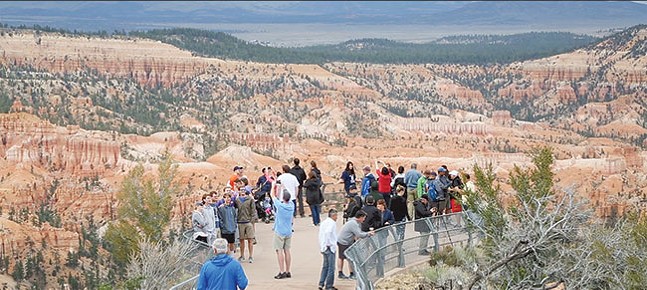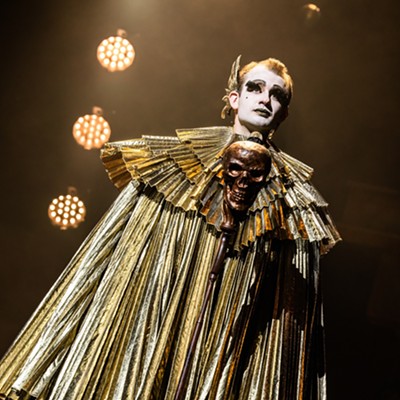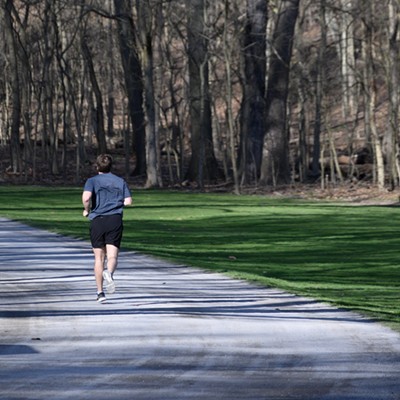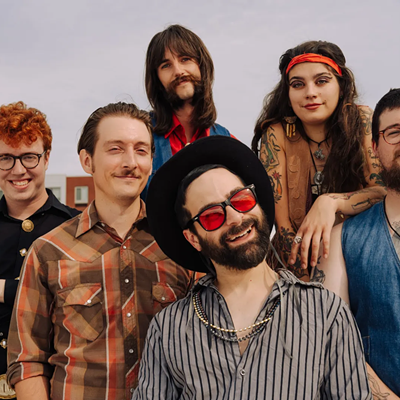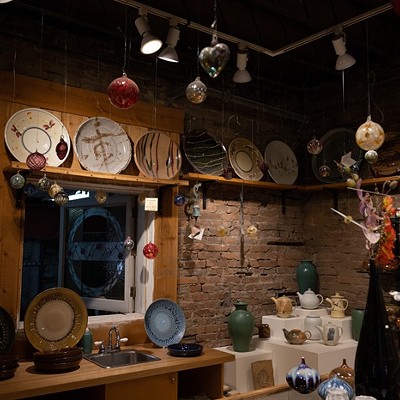Filmmaker David Bernabo wanted to make something about the environment and climate change, but he knew that topic had been covered many times over by people with more resources and expertise. So he took a more experimental route with Wild Human, exploring the concept of the relationship between humans and wilderness, more specifically how humans often replace real wilderness with representations of wilderness. It screens Fri., July 19 at the Mattress Factory, and Sat., July 20 at the Carnegie Museum of Art.
The film opens with — and features throughout — clips from a trip Bernabo took out West last year. There is footage of Bryce Canyon, Vermilion Cliffs, and other National Parks and monuments; places that are wild but are also filled with tourists; roads; walking paths; and other markers of civilization. Wild Human incorporates this footage, along with discussions with artists, excerpts from movies, screen captures of “SimCity,” compilations of nature attacking humans, footage of musicians playing in nature, and more.
Wild Human isn't structured like a traditional documentary. There are some facts and a couple of talking heads, but Bernabo mostly takes an experimental route, splicing together the clips into a kind of video collage with narration that falls closer to a lyrical essay. Peppered throughout are quotes from writers and thinkers like Jorge Luis Borges and Umberto Eco, ruminating on maps and commodity, as well as anthropologists. Bernabo also talks to local figures, like artist Celeste Neuhaus, who has sculptures featuring bird decoys, and Pittsburgh Parks Conservancy employee Gavin White talking about the difference between humans and nature.
The first half of the documentary focuses on concrete images of nature — National Parks, maps, landscaping in “SimCity,” a fake Wild West town. But midway through, it gets to UFOs and other conspiracy theories. It’s a diversion that doesn't necessarily fit within the aims of the film — examining the human relationship with wilderness — but then again, outer space is the ultimate wilderness. “The whole UFO thing is just the idea that wilderness is something that’s unknown ... that idea of the unknown is kind of this wilderness of life that surrounds us but that we have no evidence or proof of,” says Bernabo about the film.
He grapples throughout with the meaning of wilderness, whether it even exists anymore (at least in the United States), and whether the definition of wilderness is dependent on human intervention. “I like the really austere definition of wilderness as something defined by humanity, so if a human sees it, it’s no longer wilderness,” says Bernabo.
The film is broken up into sections or chapters, and the second one, “Affection for the Mirror,” is the most thought provoking of the film, examining what the difference is between human civilization and nature, if any. “Nature doesn't care about you,” Bernabo narrates, before launching into a montage of trees collapsing onto roads, bulls overturning cars, rhinos charging at a camera. “And it would seem we don’t care much for nature either,” he continues, with aged clips from the height of the logging industry.
Why is a wild animal attacking a human or human structure any different than a wild animal attacking another wild animal? What makes humans not wild animals? What makes a human development not part of nature, even though it was created by nature? None of these are really answerable, but they’re certainly worth questioning at a time when the human relationship with nature has never been more endangered.
“In my mind, I’ve sort of romanticized certain aspects of nature, and then I go out there and I'm scared to get bit by a snake,” says Bernabo. “I think it brought into clear focus my romanticized notions of nature, and my fear of it, and my desire to not be afraid of it.”
Wild Human. 7 p.m. Fri., July 19. Mattress Factory, 505 Jacksonia St., North Side. Sat., July 20. 8 p.m. Carnegie Museum of Art, 4400 Forbes Ave., Oakland. $5-15. davidbernabo.info

